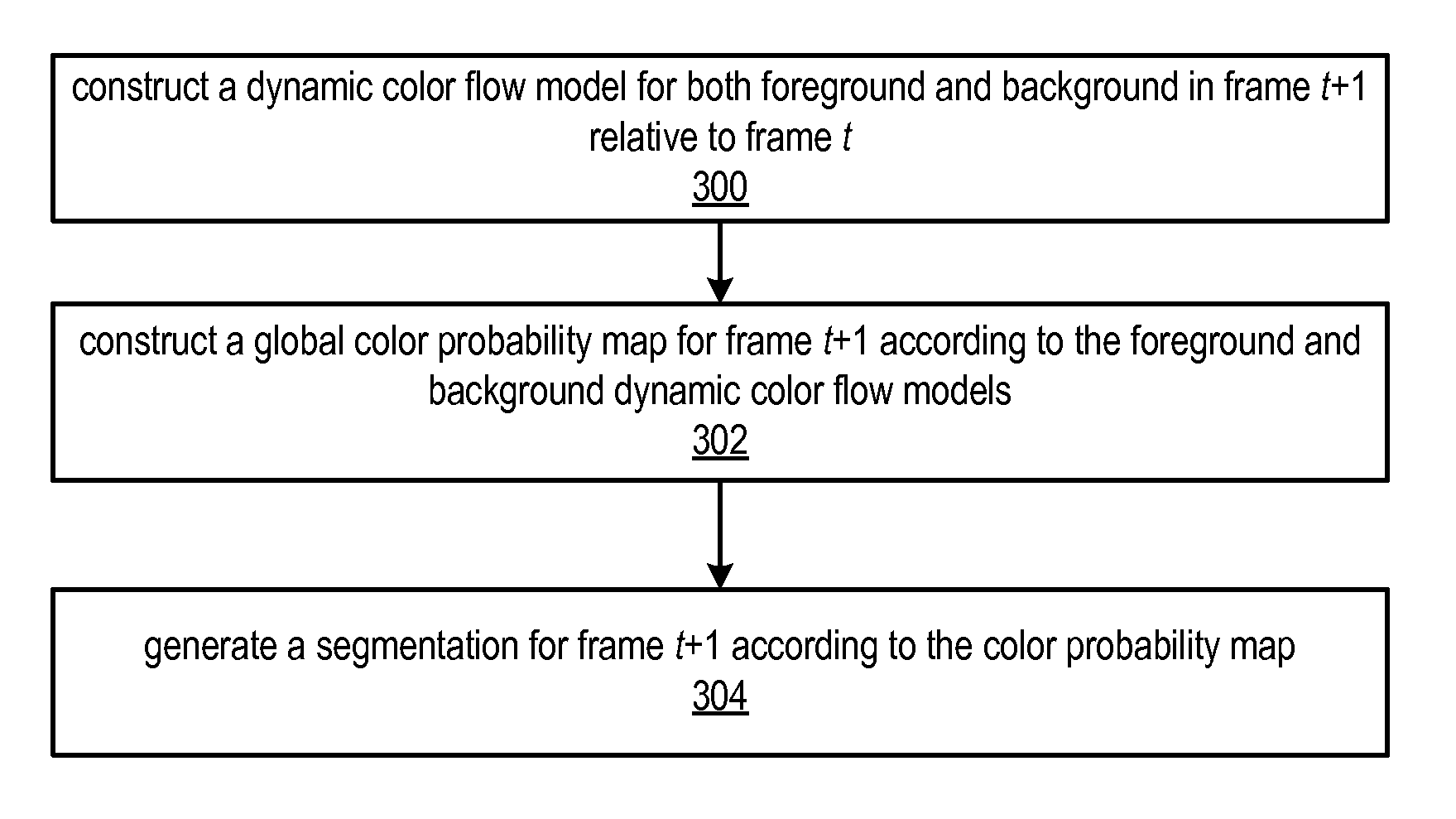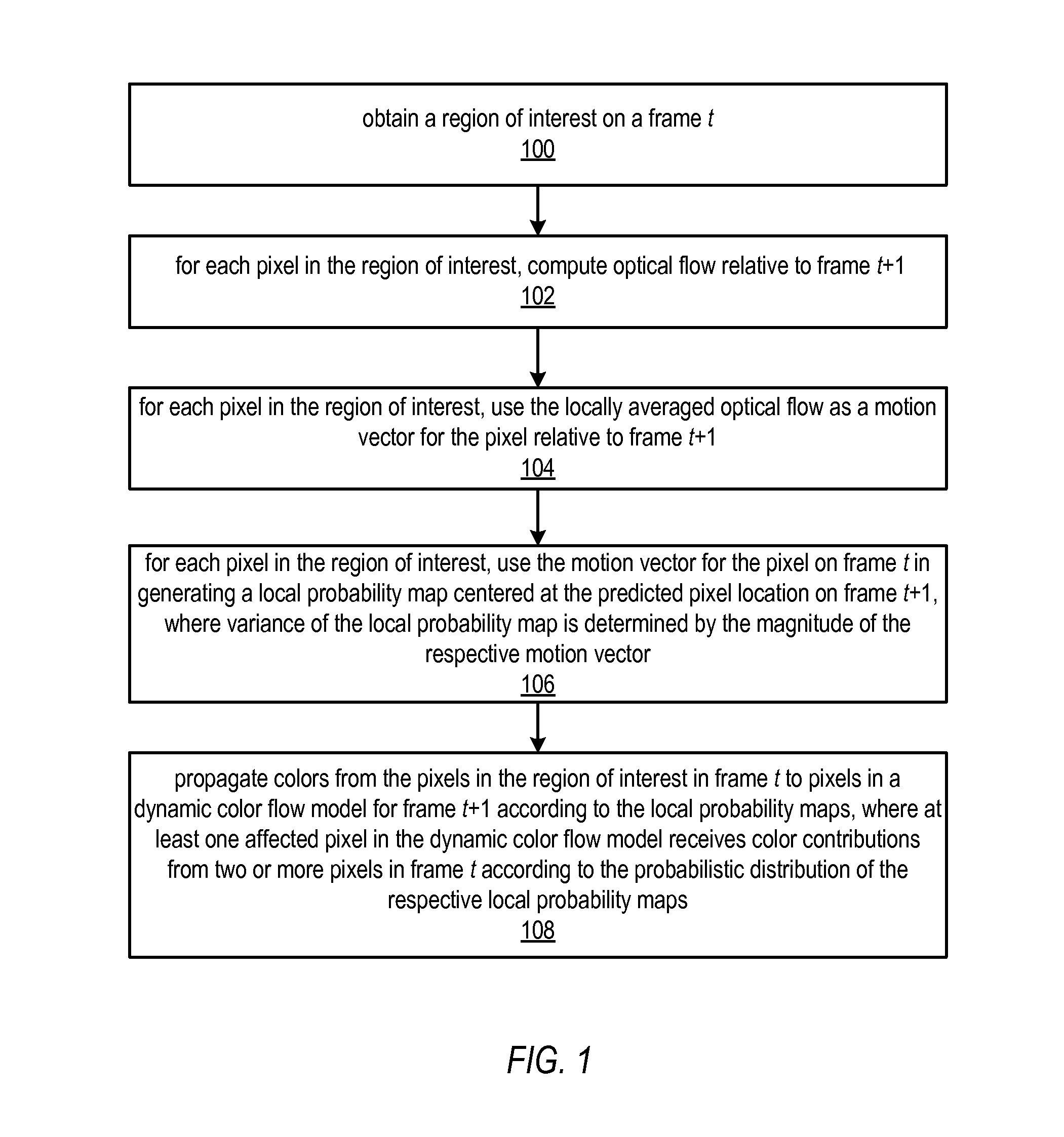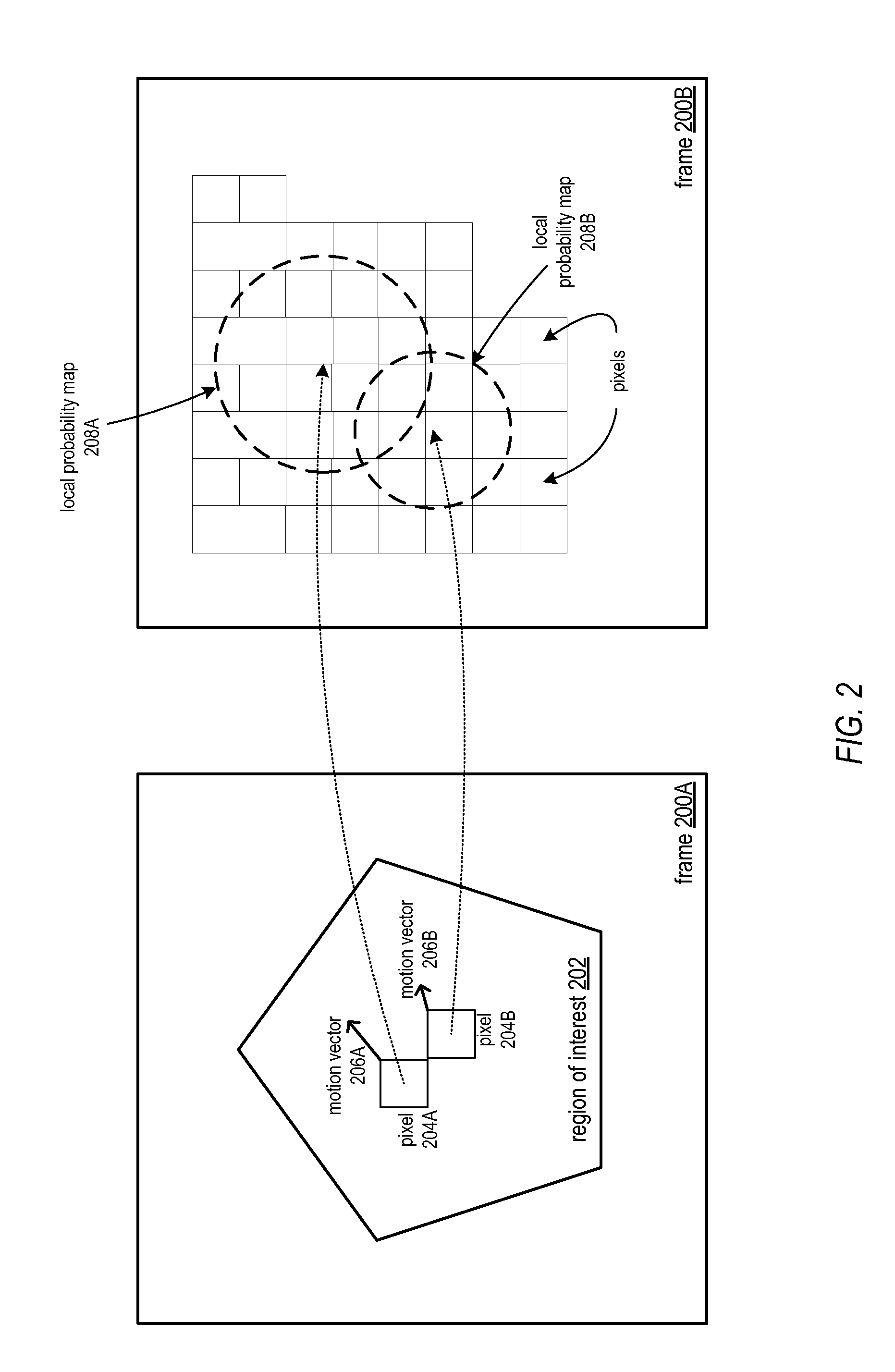Methods and Apparatus for Dynamic Color Flow Modeling
a dynamic color flow and modeling technology, applied in image analysis, image enhancement, instruments, etc., can solve the problems of difficult to distinguish objects from their background using color information, appearance complexity and motion complexity, and difficulty in complex real-world video frame sequences
- Summary
- Abstract
- Description
- Claims
- Application Information
AI Technical Summary
Benefits of technology
Problems solved by technology
Method used
Image
Examples
example implementations
[0081]FIG. 14 illustrates an example video object segmentation module that may implement a video object segmentation process using a dynamic color flow modeling method, as illustrated in the above Figures. Module 900 may, for example, implement a dynamic color flow module 902 that implements a dynamic color flow modeling method, for example as illustrated in FIG. 1. FIG. 15 illustrates an example computer system on which embodiments of module 900 may be implemented. Referring to FIG. 14, module 900 receives as input a video frame sequence 920 including two or more video frames and an initial segmentation 922, for example an initial segmentation for the first frame in the video frame sequence 920. Module 900 may then apply a video object segmentation method using dynamic color flow modeling to the video frame sequence 920, for example as illustrated in FIG. 3, to generate segmentation(s) 930 for the frames in video frame sequence 920. Module 900 may receive additional user input 912 ...
PUM
 Login to View More
Login to View More Abstract
Description
Claims
Application Information
 Login to View More
Login to View More - R&D
- Intellectual Property
- Life Sciences
- Materials
- Tech Scout
- Unparalleled Data Quality
- Higher Quality Content
- 60% Fewer Hallucinations
Browse by: Latest US Patents, China's latest patents, Technical Efficacy Thesaurus, Application Domain, Technology Topic, Popular Technical Reports.
© 2025 PatSnap. All rights reserved.Legal|Privacy policy|Modern Slavery Act Transparency Statement|Sitemap|About US| Contact US: help@patsnap.com



